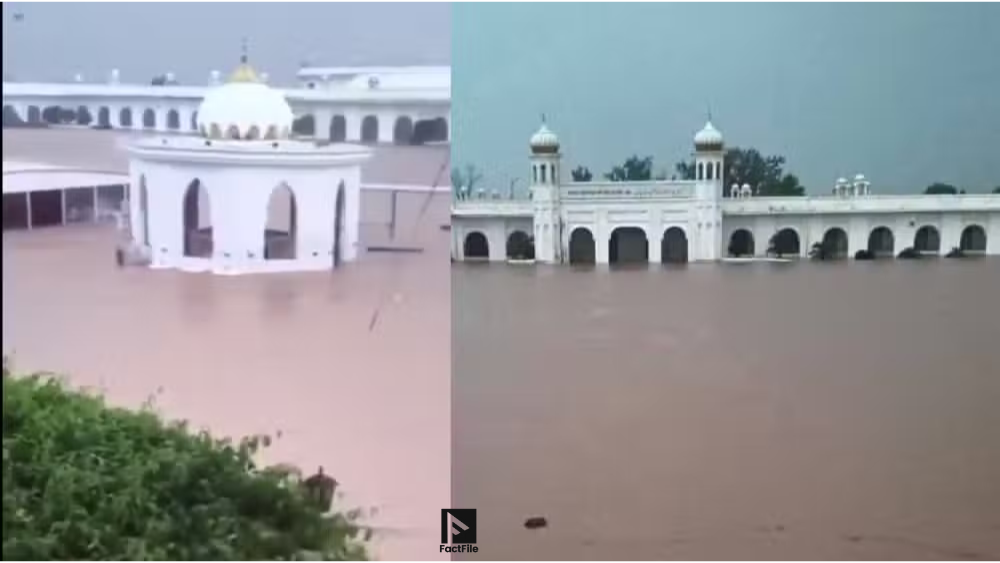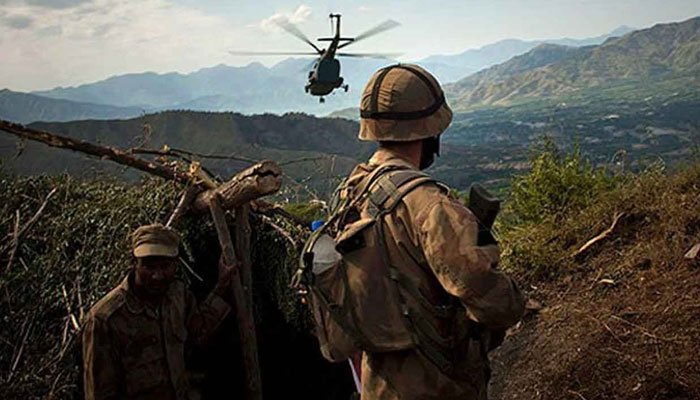Gurdwara Kartarpur Sahib submerged after severe flooding hit Punjab, Pakistan, when a protective embankment of the Ravi River gave way on August 27, 2025. Authorities confirmed that 200 to 300 people remain trapped in the shrine and surrounding areas as floodwaters engulfed the historic site. Pakistan Army teams have launched urgent evacuation and relief operations to rescue those stranded.
Collapse of Embankment Near Gurdwara Kartarpur Sahib
The crisis began when the protective dam near Bheko Chak collapsed under the pressure of an extraordinary surge in the Ravi River. More than 250,000 cusecs of water rushed through Kot Ninan in Shakargarh, overwhelming embankments and inundating nearby towns and villages. Within hours, water entered the Gurdwara Kartarpur Sahib complex, submerging key structures and forcing devotees and residents to higher ground.
The flooding also led to the closure of the Narowal–Shakargarh road, a major route in the district. The disruption cut off key access points, hampering relief vehicles and isolating several communities.
Areas Worst Affected
Floodwaters spread rapidly across multiple areas in Narowal and Shakargarh. Entire localities, including Bheko Chak, Nowshera, Nowgaza, Mandikhel, Bhajna, and the Kartarpur Main Highway, are now underwater. Streets turned into rivers, homes were swamped, and families scrambled to rooftops for safety as the water level kept rising.
The historic Kartarpur shrine, one of the most sacred sites in Sikhism, stands at the center of this devastation. The inundation has forced authorities to suspend travel through the Kartarpur Corridor, further restricting movement.
Pakistan Army Leads Rescue Efforts
The Pakistan Army, working with local administration, immediately launched a coordinated rescue mission. Soldiers and disaster relief units moved into flood-hit villages with boats and heavy vehicles. Their priority has been evacuating families stranded in Kartarpur Gurdwara and nearby communities.
Families were guided to temporary relief camps set up in higher areas. Authorities reassured the public that rescue efforts would continue day and night until everyone is moved to secure shelters.



Wider River Flooding Across Punjab
The situation extends far beyond Kartarpur. Officials confirmed dangerously high water levels in both the Ravi and Chenab Rivers.
- At Marala Headworks, the Chenab River recorded an inflow of 769,000 cusecs and an outflow of 762,000 cusecs.
- At Khanki, the flow reached 755,000 cusecs, raising alarm across downstream districts.
- On the Ravi River, Jasar recorded heavy flooding, while Shahdara registered 72,000 cusecs.
- At Baloki Headworks, the inflow was 79,000 cusecs with an outflow of 67,000 cusecs.
- Further south, Ganda Singh Wala saw 245,000 cusecs and Sulemanki registered 100,000 cusecs.
These measurements confirm one of the most severe flood events in recent years, placing multiple districts at high risk.
Authorities Issue Warnings
Provincial authorities urged residents in flood-prone areas to stay alert and cooperate fully with rescue teams. Announcements broadcast through local mosques and media urged people to move to safer ground before nightfall. With meteorological forecasts predicting more rainfall in the coming days, officials fear that water levels may rise further, worsening the crisis.
Emergency control rooms have been established across Narowal, Shakargarh, and other vulnerable districts. Medical teams remain on standby to treat injuries, waterborne diseases, and exhaustion among evacuees. Relief workers are distributing food, water, and blankets in temporary shelters.
Cultural and Religious Significance
The sight of Kartarpur Gurdwara submerged has alarmed the global Sikh community. As the final resting place of Nanak Dev Ji, revered spiritual leader and founder of Sikhism, the shrine carries immense spiritual value. Its flooding has not only endangered human lives but also threatened cultural heritage and religious continuity.
The Gurdwara was built where Nanak Dev Ji spent the last 18 years of his life and passed away in 1539. Through the Kartarpur Corridor, thousands of devotees from India and abroad visited regularly until today’s disaster forced suspension of travel. Sikh organizations worldwide have expressed deep concern, urging Pakistan to protect and restore the site as soon as possible.
Outlook
The floodwaters continue to rise, with uncertain forecasts ahead. If heavy rains persist, both the Ravi and Chenab Rivers could surge further, endangering more towns. For now, the priority remains rescuing the 200 to 300 people trapped near Kartarpur Gurdwara submerged under water, stabilizing embankments, and preventing new breaches.
ALSO READ: Tarbela Dam reaches full capacity, Indus in high flood at Guddu
As relief efforts expand, the incident highlights the urgent need for stronger flood defenses and better disaster preparedness in Punjab’s riverine belt. The global community, especially Sikh diaspora groups, are watching closely, hoping for swift recovery and protection of one of their most sacred religious landmarks.





